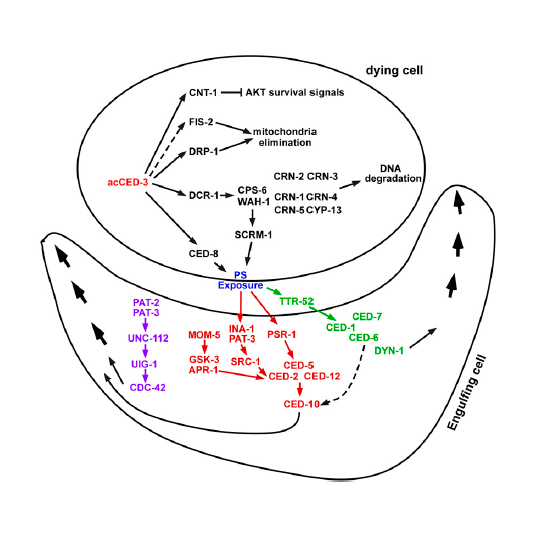Programmed Cell Death During Caenorhabditis elegans Development
01-Aug-2016
Genetics, vol. 203, no. 4, 1533-1562; https://doi.org/10.1534/genetics.115.186247
Genetics, online article
Programmed cell death is an integral component of Caenorhabditis elegans development. Genetic and reverse genetic studies in C. elegans have led to the identification of many genes and conserved cell death pathways that are important for the specification of which cells should live or die, the activation of the suicide program, and the dismantling and removal of dying cells. Molecular, cell biological, and biochemical studies have revealed the underlying mechanisms that control these three phases of programmed cell death. In particular, the interplay of transcriptional regulatory cascades and networks involving multiple transcriptional regulators is crucial in activating the expression of the key death-inducing gene egl-1 and, in some cases, the ced-3 gene in cells destined to die. A protein interaction cascade involving EGL-1, CED-9, CED-4, and CED-3 results in the activation of the key cell death protease CED-3, which is tightly controlled by multiple positive and negative regulators. The activation of the CED-3 caspase then initiates the cell disassembly process by cleaving and activating or inactivating crucial CED-3 substrates; leading to activation of multiple cell death execution events, including nuclear DNA fragmentation, mitochondrial elimination, phosphatidylserine externalization, inactivation of survival signals, and clearance of apoptotic cells. Further studies of programmed cell death in C. elegans will continue to advance our understanding of how programmed cell death is regulated, activated, and executed in general.











